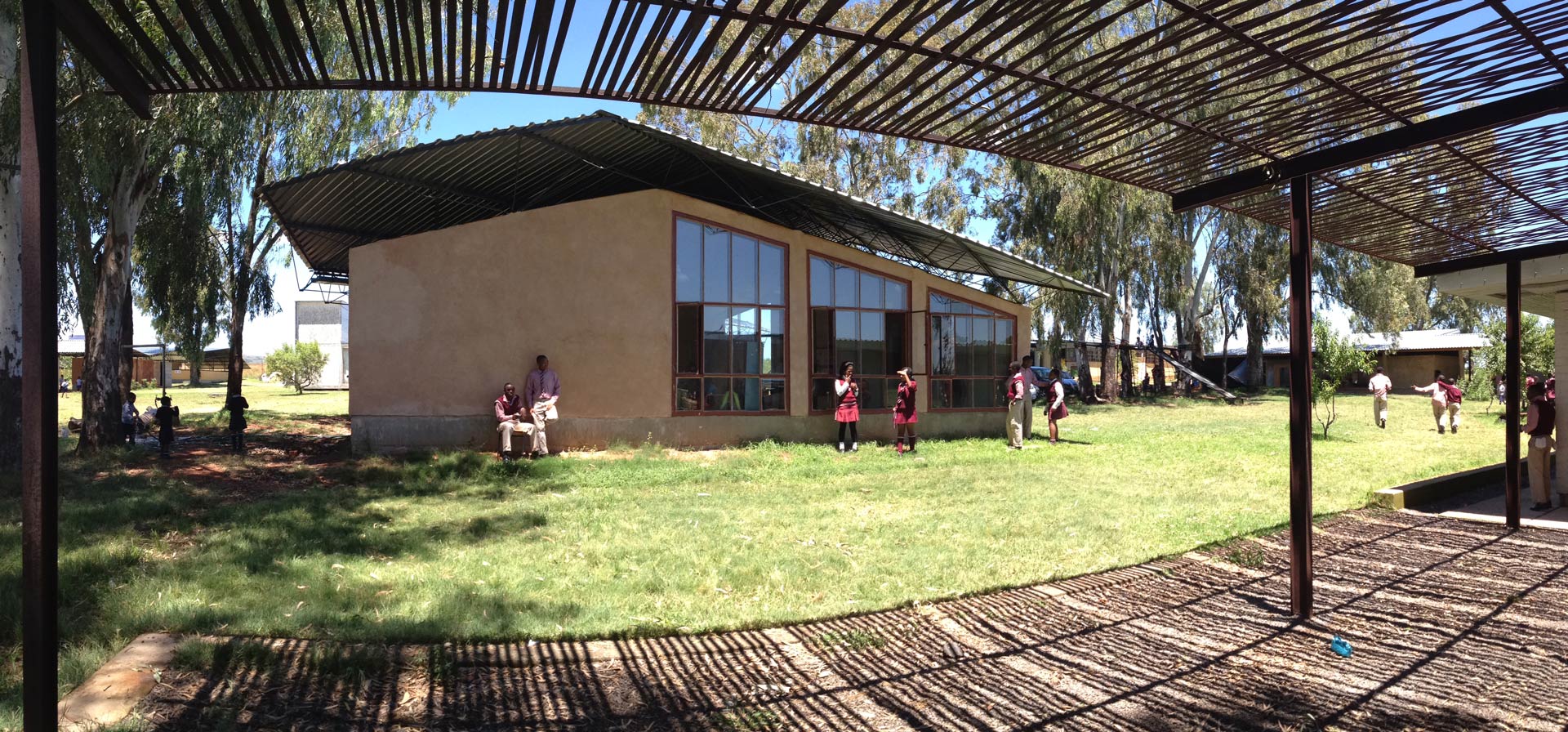Ithuba Science Center, Johannesburg, South Africa

In 2012, a team of students from RWTH Aachen completed the Ithuba Science Center, a 250 m2 laboratory building. A corrugated metal roof extends over a steel frame, rammed earth, and wood structure, which houses two classrooms, storage spaces, and bathrooms. Building materials were affordable and locally sourced, making for a simple and fast construction, which students and trained, local craftsmen completed in approximately eight weeks. Students participated in every project phase: from initial sketches and model making to the scheduling, supervision, and financial management of construction. RWTH students also designed the interiors and furnishings of the Ithuba Science Center, which were produced in Montic. Besides offering instruction in architecture and design, the Ithuba projects attune participants to the importance of the quality of construction and promote intercultural exchange. Due to limited resources, the climate concept relies on passive measures only. Hand manufactured double layered windows (box windows) are used to insulate, light and naturally ventilate the school. As the sun in this latitude rises high during summer the extended roof provides efficient shading. The raised roof is designed to reduce heat transmission into the building and ensures effective venting of the absorbed heat radiation as well. On the contrast, the window size and location is optimized for passive solar gains during winter (no heating system). Hence, an appropriate and balanced insulation of the floor reduces cold transmission in winter month. The thermal mass in the school, like clay walls and the concrete floor, damps temperature swings for both summer and winter periods and provides an optimized climate for the pupils.



